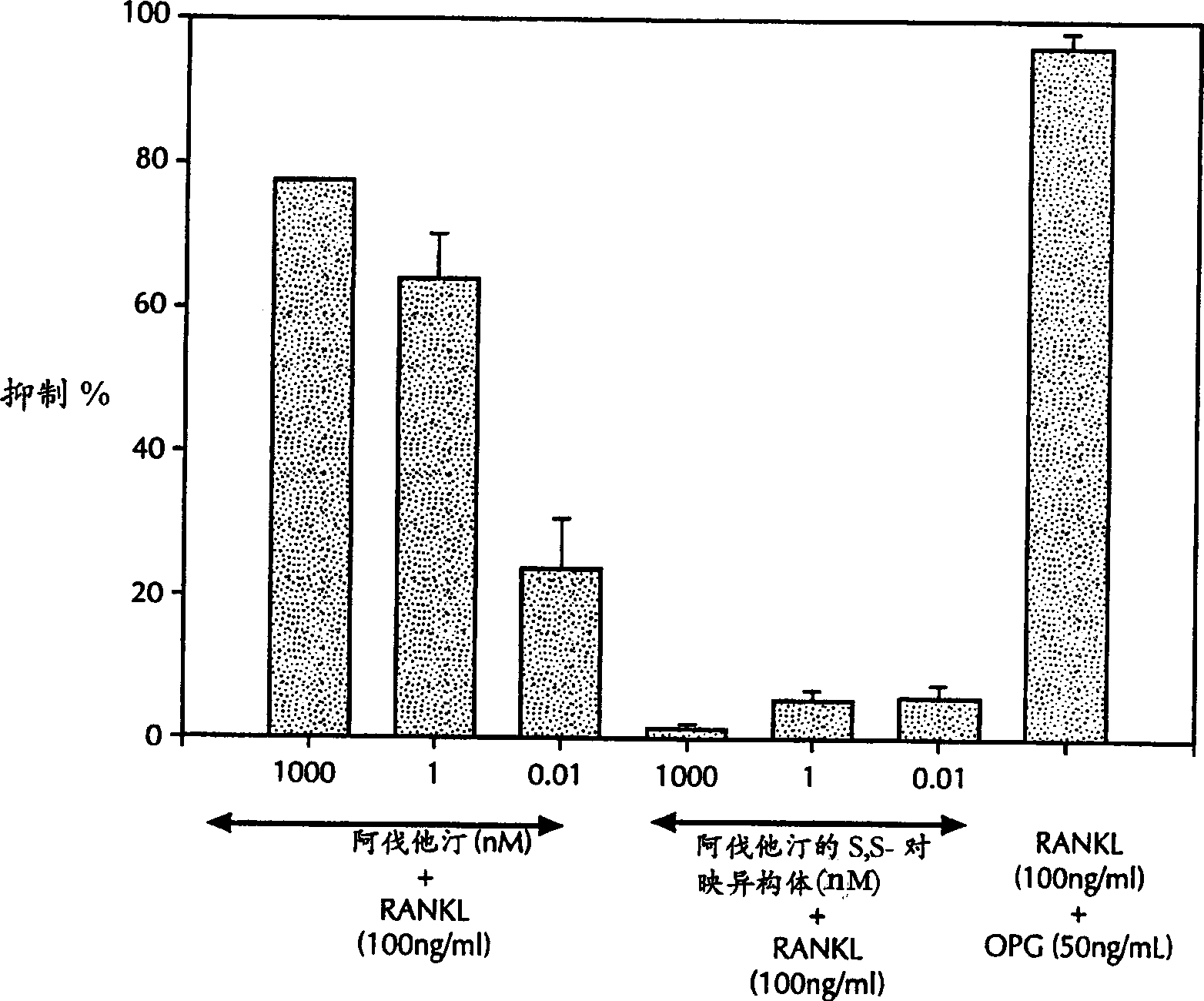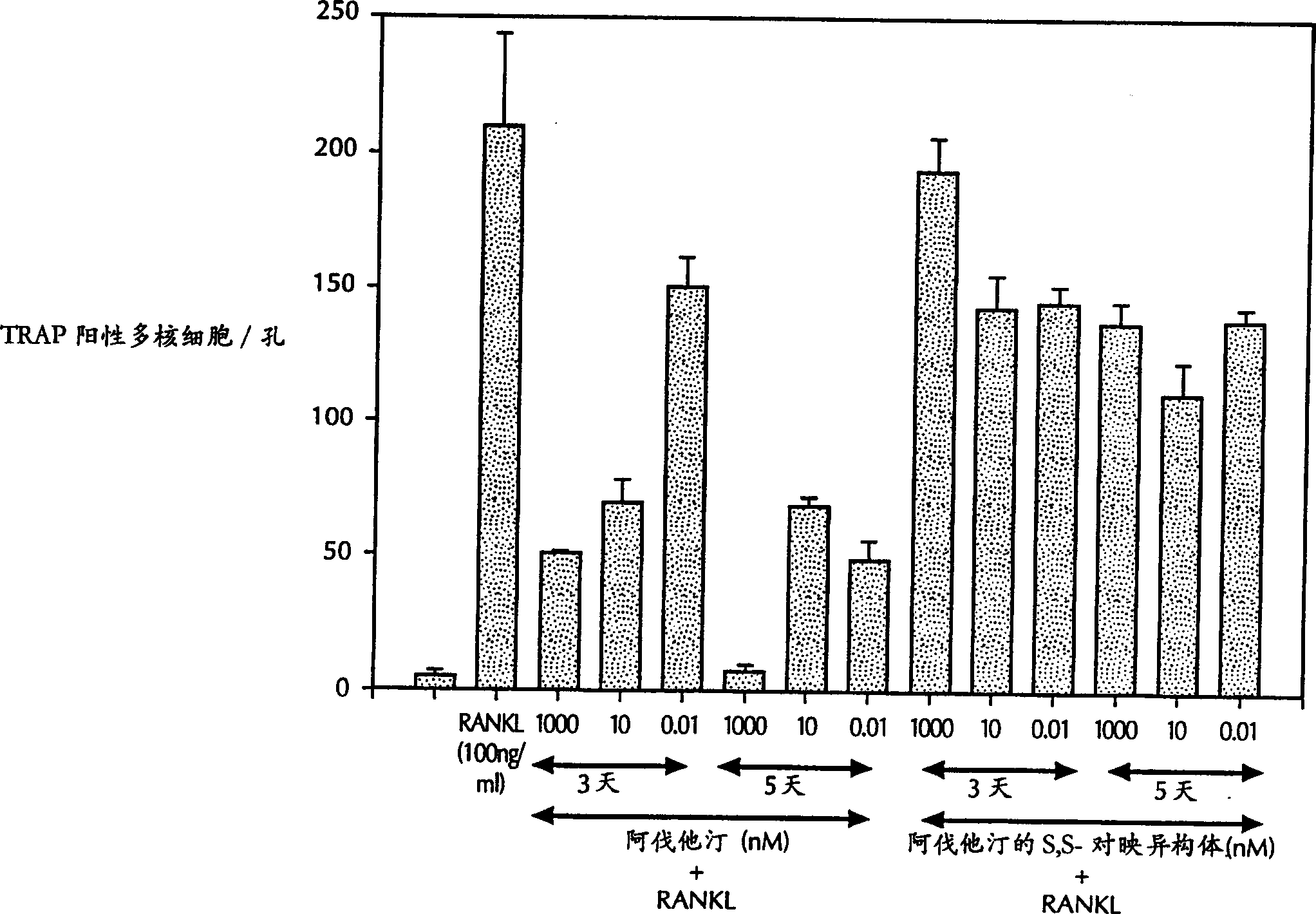Application of tadins inhibiting formation of osteoclast
A technology for inhibiting osteoclasts and statins, applied in the direction of active ingredients of esters, bone diseases, organic active ingredients, etc., can solve the problems of no proven atorvastatin
- Summary
- Abstract
- Description
- Claims
- Application Information
AI Technical Summary
Problems solved by technology
Method used
Image
Examples
Embodiment 1
[0062] Bone Marrow Cell Culture
[0063] Osteoclasts were obtained from bone marrow cells of 6- to 8-week-old C57B1 / 6 mice as previously described, Kobayashi K et al., Tumor Necrosis Factorα stimulates osterclast differentiation by a mnechanism independent of the ODF / RANKL-RANK interaction, J. Exp. Med., 2000;191:275-285. Briefly, after aseptically removing the femur, the adhering soft tissue is stripped from the bone. Bone marrow was drained with alpha minimum essential medium (α-MEM) using a syringe and needle. On a 48-well culture plate, culture bone marrow cells (0.15 × 10 6 cells / well) for 3 days. The osteoclasts thus obtained were further cultured for 5 days with RANKL ± atorvastatin, the S,S-enantiomer of atorvastatin or osteosarcoma (OPG). OPG, the lytic decoy receptor of RANKL, has been shown to effectively block RANKL-induced osteoclastogenesis in several in vivo and in vitro models. In some experiments, compounds were added on day 5 after isolation. At the end...
Embodiment 2
[0065] RAW 264.7 cell culture
[0066] RAW cells were cultured in α-MEM containing 10% FBS, 100 IU penicillin, 100 μg / mL streptomycin. Plate at a density of 2000 cells / well on 48-well culture plates. After overnight incubation, they were stimulated with RANKL (50ng / mL) ± atorvastatin, the S, S-enantiomer of atorvastatin or osteosarcoma (OPG) for 5 days, and stained to detect TRAP at the end of 5 days.
Embodiment 3
[0068] Tartrate-resistant acid phosphatase (TRAP) staining
[0069] After an initial wash with 1X PBS, cells were finely fixed for 30 seconds with an acetone-based fixative solution containing acetone, citric acid, and 37% formaldehyde. After washing twice with distilled water preheated to 37°C, the cells were incubated at 37°C in acetate buffer containing naphthol AS-B1 and Fast Garnet GBC solution for 45 minutes. TRAP-positive cells are usually brown when viewed under a microscope. Count the total number of TRP-positive cells with 3 or more nuclei in each well. TRAP activity is a phenotypic hallmark of mature osteoclasts.
PUM
 Login to View More
Login to View More Abstract
Description
Claims
Application Information
 Login to View More
Login to View More - Generate Ideas
- Intellectual Property
- Life Sciences
- Materials
- Tech Scout
- Unparalleled Data Quality
- Higher Quality Content
- 60% Fewer Hallucinations
Browse by: Latest US Patents, China's latest patents, Technical Efficacy Thesaurus, Application Domain, Technology Topic, Popular Technical Reports.
© 2025 PatSnap. All rights reserved.Legal|Privacy policy|Modern Slavery Act Transparency Statement|Sitemap|About US| Contact US: help@patsnap.com



